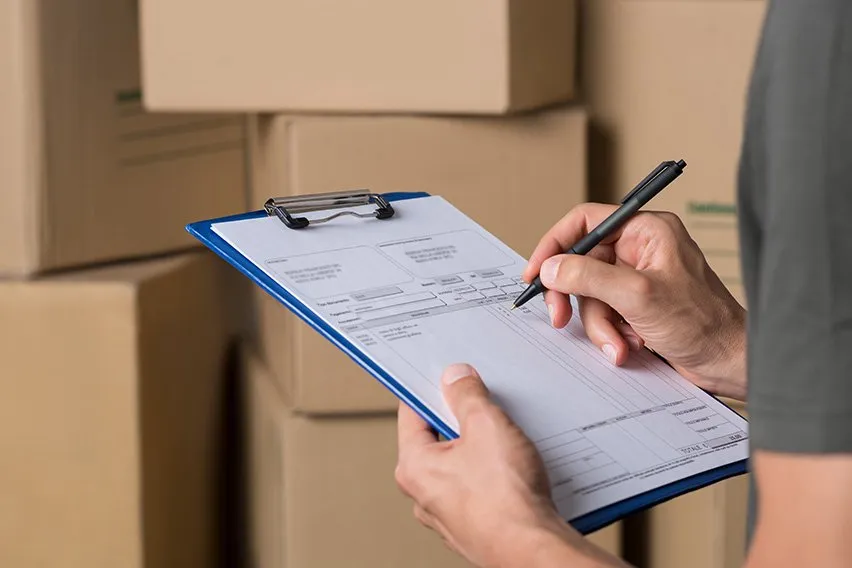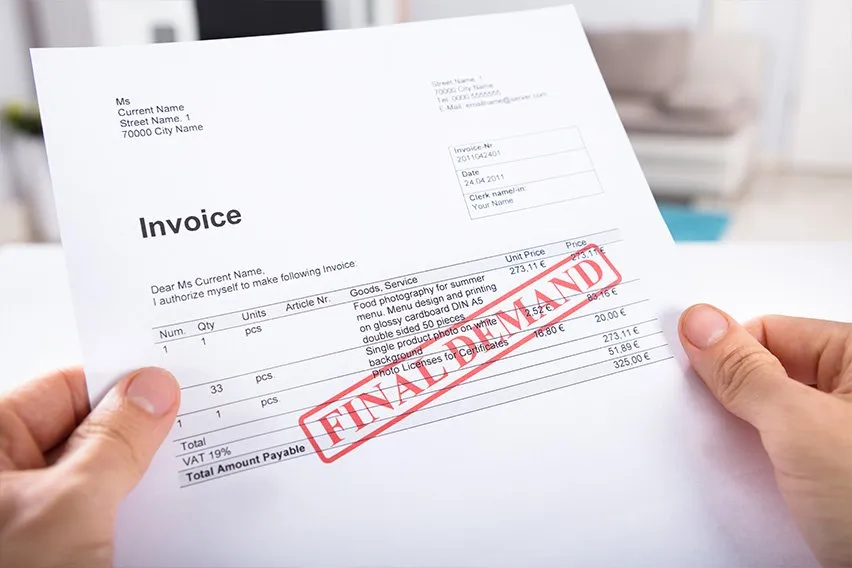What Is A Shipping Invoice? A Bill Of Lading Guide For Small Businesses

A shipping invoice is an accounting document businesses use to provide a record of the products shipped from a seller to a buyer. The shipping invoice, also called a bill of lading, is a legal document required any time a company sends a freight shipment of goods. As with other invoices, shipping invoices serve as a receipt for freight shipments. They’re similar to commercial invoices, which are also used for shipping goods across international borders.
These topics will help you better understand what a shipping invoice is and when to use one:
What Needs to Be Included on a Bill of Lading?
Shipping Invoice vs Commercial Invoice
What is a Bill of Lading?
A bill of lading is a legal document that outlines the details of a freight shipment, including the type of goods transported, the quantity of goods, the total cost, and the shipment’s final destination. Because it’s a legal document, the bill of lading also serves as a binding contract between the freight carrier and the shipper.
The bill of lading acts as a shipping receipt when the goods arrive at their intended destination. The invoice must be shipped along with the goods sold and should be signed by the shipper and the person receiving the shipment. The term bill of lading is most often used in reference to international trade. The word lading refers to the process of loading a ship with cargo.

Purpose of a Bill of Lading
There are three main purposes to a bill of lading:
- The first is that it provides proof of a contract of carriage. The actual contract is agreed upon when the shipper books with a carrier. The bill acts as proof that the contract exists.
- The second is that the bill works as a receipt for goods. The carrier gives the shipper the bill in exchange for the cargo. It shows that the carrier got the cargo from the shipping agent in good condition.
- The third reason is that it provides a title to the goods. The bill of lading shows the holder has the right to claim the goods.
What Needs to be Included in a Bill of Lading?
There is specific information that every bill of lading should include. The bill of lading provides documentation of the goods being shipped, the quantity of items, the shipment’s value, and the cargo’s final destination. Here is everything you need to include on a bill of lading for international shipping:
1. Shipper’s Contact Information
First, on your bill of lading, you’ll need to include the information for the shipper’s contact person clearly on the invoice, including the full name and business address.
2. Receiver’s Contact Information
Your bill of lading must also include the receiver or consignee’s contact details written clearly, with the full name and mailing address.
3. Purchase Order Numbers or Reference Numbers
The purchase order number and any other reference number are necessary for record-keeping purposes. They may also be used to release the shipment for delivery or pick up.
4. Instructions and Notes
There is a section on the bill of lading that leaves room for special instructions and notes for the carrier about the specific shipment.
5. Pick-up Date
The bill of lading should list the date the carrier picked up the shipment. The pick-up date is often used to track the cargo and is useful when reconciling shipping invoices.
6. Description of Goods
Your bill of lading should include a full description of the items being shipped, including the number of items, the dimensions and weight of each product, and details of the materials shipped.
7. Packaging Type
A bill of lading should also list the type of packaging used for the shipment, such as cartons, crates, drums, or pallets.
8. Freight Class
There are 18 different classes of freight shipments. The classifications are based on dimensions, weight, ease of handling, value, and liability. You should always label the freight class of your shipment.
9. Any Special Designations
Sometimes, the shipment will be subject to a special designation based on its contents. For example, hazardous materials need to be designated as such because special rules and regulations apply to the shipment of dangerous goods.
10. Signature
Since this serves as a legal document, there should be room left for a signature for the shipper and carrier to show acceptance.

Shipping Invoice Types
You’ll come across various shipping invoices that you can use, but we’ve outlined some of the most common ones for your business.
Standard Invoice
This is the most common type of business invoice. It includes the invoice number, business name, client’s name, contact information, and payment owed by the client.
Pro-Forma Invoice
A proforma invoice is a projected bill of sale, or preliminary bill of sale, given to the client before the shipment of goods. The invoice will have details about what was purchased and how much it cost, such as shipping volume and transportation fees. To learn more about proforma invoices follow our guide Proforma Invoice Meaning.
Commercial Invoice
This invoice type is most commonly used in international trade and maritime freight shipping. The invoice works as a legal contract between the supplier and purchaser as proof of purchase.
Debit Invoice
A company will use a debit invoice to collect money from a customer. This can also be used to make small changes to an existing bill.
Credit Invoice
A credit invoice outlines a refund or credit on an invoice.
Mixed Invoice
A mixed invoice can seem more complicated as it combines both credit and debit charges on a single invoice. This type of invoice is rarely used with smaller businesses but can come up with invoicing multiple projects on a single bill.

Shipping Invoice Template
Shipping invoices, trucking invoices, and freight invoices include greater detail than most invoices generated by businesses. They have detailed information about the shipment’s size, weight, packaging, and contents. The shipping invoice sample prepared by UPS below will help you better understand all the information that must be included when shipping goods internationally. Download a free shipping invoice template and see for yourself how easy creating invoices can be.

Shipping Invoice vs Commercial Invoice
A shipping invoice, or bill of lading, outlines important shipment information to the carrier to facilitate shipping services to the customer. A shipping invoice will include:
- The company name and address
- Product type and/or name
- Quantity of goods
- Gross and net weights
- Any equipment that might have been involved in loading the product.
- Any hazardous or special handling information based on the product requirements.
- A customer reference number.
- The carrier’s signature at pick-up and the customer’s at delivery.
Commercial invoices, or bills of sale, are used for billing and will include the name and address of the customer and seller, product name, and quantity. Because a commercial invoice serves as a financial document, it must include the purchase price and bill due date, with a cost breakdown for any freight charges, insurance costs, special packaging fees, or other service charges that a business owner will need to be aware of.
Key Takeaways
A bill of lading, or shipping invoice, is a legal document that outlines the details of a freight shipment, including the type of goods transported, the number of goods, the total cost, and the shipment’s final destination. The purpose of a bill of lading is to provide proof of contract, a receipt for the goods, and a title to the goods. A bill of lading should include the following information: shipper’s contact information, receiver’s contact information, purchase order numbers or reference numbers, instructions and notes, pick-up date, description of goods, packaging type, freight class, and any special designations.
The main types of invoices you’ll come across for your business are standard invoices, proforma invoices, commercial invoices, debit invoices, credit invoices, and mixed Invoices.
FAQs on Shipping Invoice
Is it legal to invoice before shipping?
Yes, it is legal. If an invoice is sent and paid before the shipment and delivery of goods, this is considered prepayment. Occasionally, a company might want to pre-pay to get an expense on record earlier. Ultimately, if an invoice is sent and paid too early, the client is owed a credit until the transaction is complete.
What is the difference between billing and shipping?
Billing has to do with the cost of the transaction and the amount owed by the customer. Shipping depends on the seller delivering the goods within the bill of lading.
Where do you put a shipping invoice?
Once completed, place your shipping invoice alongside the product being shipped. This helps ensure the recipient will see the invoice when they receive the product.
Reviewed by
Jason Ding is a seasoned accountant with over 15 years of progressive experience in senior finance and accounting across multiple industries. Jason holds a BBA from Simon Fraser University and is a designated CPA. Jason’s firm, Notion CPA, is an accounting firm with a business-first focus. The firm specializes in preparing personal and corporate taxation while providing fractional CFO work and leading the accounting and finance function for several small-to-medium-sized businesses. In his free time, you’ll find Jason on the basketball court, travelling, and spending quality time with family.
RELATED ARTICLES


 What Is Invoice Reconciliation?
What Is Invoice Reconciliation? Outstanding Invoice: What They Are & Tips To Handle Them
Outstanding Invoice: What They Are & Tips To Handle Them What Is a Supplier Invoice?
What Is a Supplier Invoice? What Is a VAT Invoice? Charging Value-Added Tax to EU Clients
What Is a VAT Invoice? Charging Value-Added Tax to EU Clients What Does FOB Mean on an Invoice? | Shipping Invoice Definitions
What Does FOB Mean on an Invoice? | Shipping Invoice Definitions Flat Rate vs Hourly Rate: What Should You Choose?
Flat Rate vs Hourly Rate: What Should You Choose?